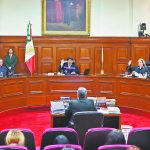That guy ceased to exist at the age of 76 at his home in Nova Iguaçu, a town in Baixada Fluminense, in the state of Rio de Janeiro. It was April 25, 2014. His corpse was left on the bedroom floor, face down, with his face pressed to a pillow. According to the Rio de Janeiro police, this would have been the epilogue of an assault carried out by three hooded men, and which had as a loot some collector’s weapons. However – according to the wife, who remained locked in another room – the intruders also took the deceased’s computers and documentation. She assured that they had received a message by handy: “Haven’t they killed him yet? This is delayed! The order is to kill him! ”.
There was another detail that made the theft hypothesis rare: the victim was the retired colonel of the Brazilian Army, Paulo Malhaes.
Just a few weeks earlier it had become the first repressor of that country who had admitted his participation in kidnappings, torture and executions during the dictatorship that ruled it between 1964 and 1985.
His testimony before the National Truth Commission – dumped in a 232-page recording – ranges from his tasks carried out in the Casa de la Muerte, a clandestine extermination center in Petrópolis, 60 kilometers from Rio de Janeiro, to the techniques he devised to prevent the identification of victims through post-mortem mutilations. Nor did he hide his role in the Condor Plan –with Argentine agents from Battalion 601–, among which there are actions against Montoneros militants, during the Counteroffensive.
At this point, it is necessary to cross your story with another story.
The downcast executioner

The pact of silence between the vernacular repressors of the last dictatorship and the destruction or concealment of the files on the so-called “anti-subversive struggle” led to the reconstruction of both its operational scheme and the identity of its creators. depended primarily on the testimony of survivors. But there were exceptions.
The truth is that the declassification and analysis of files of Army, Navy and Air Force personnel –carried out between 2011 and 2016 by the National Memory Archive (ANM) and the National Human Rights Directorate of the Ministry of Justice– They opened access to new names and data on State terrorism; especially, when evaluating awards for “acts of service” and administrative claims for mental trauma and “war” diseases.
It is in such roles that the figure of Lieutenant Colonel Eduardo Stigliano emerges –Died of natural causes in 1993–, whose file ended up being incorporated into Case 4012, on the crimes committed under the jurisdiction of the Military Institutes Command based in Campo de Mayo.
It should be noted that this fellow was prone to bad luck. So much so that his medical history records the following circumstance: “On September 17, 1979, he was assisted as a result of a perforation in his left hand by a grenade splinter entering the back and exiting the palm, at the height of the index finger, when the deceased fulfills a combat mission ”.

This took place when A military gang under his command ambushed the member of the Montoneros national leadership, Horacio Mendizábal, and former deputy Armando Croatto in the town of Munro. They both resisted. The shooting was brief, and ended after Mendizábal threw the grenade in question, when they were killed.
It was not Stigliano’s first injury, given that on March 26, 1976, when he was acting as a new inspector of the Escobar police station – where Luis Patti served – he led an operation in a house in the area. Although the identity of its occupants and their fate are unknown, in the lieutenant colonel’s medical history it was established that “a 9-millimeter bullet with a hollow point was fired from inside the house and entered from behind and exits by the anterior deltoid region, in circumstances when the perpetrator was fulfilling a combat mission ”.
Already after the pardon to the repressors signed by President Carlos Menem, he was very downcast, with a growing depressive picture and imprisoned by nightmares. Then made an administrative claim in order to obtain a salary bonus for “disability and war neurosis.”

The already yellowed papers presented by him in 1991 before the Army General Staff (EMGE) constitute, due to their great historical and judicial value, one of the most shocking documents of the most ominous period in Argentine history. There he incriminates himself in 53 murders.
He acknowledges his participation in kidnappings and street executions of Montonero chiefs. It reveals the actions of a hitherto unknown task force, based in Campo de Mayo. It describes executions before all the chiefs of the area. Supports the flights of death (three years before the Navy officer, Adolfo Scilingo, did) And he recounts a visit by Lieutenant General Leopoldo Fortunato Galtieri to the El Campito extermination center. On this, he pointed out: “His purpose was to chat with the subversive criminal ‘Petrus’, captured by a section under my orders”.
His narration in this regard was enough to shed light on the last moments lived by Horacio Domingo Campiglia, none other than the person in charge of Montonera intelligence, who was kidnapped on March 12, 1980 at the Rio de Janeiro airport together with Mónica Susana Pinus de Binstock, after being beaten down by a group of Argentine agents with the collaboration and coverage of local army troops. Now it is known that Stigliano was the one who had the singing voice there, “together with a Brazilian military commander”, according to the brief filed with the EMGE.
23 years after such an administrative confession, Colonel Malhaes revealed in his testimony before the National Truth Commission that the latter was none other than him.
The sin of indiscretion

Campiglia, 31, had been a member of the Revolutionary Armed Forces (FAR). Already in Montoneros, he was added in 1977 to his national leadership. And along with the rest of that cupola, he settled in Mexico. There he lived with his partner, Pilar Calveiro. She, who was held captive for a year in the Esma and had been released months before, accompanied him on October 11, 1980 to the Benito Juárez airport in the Federal District, since he had to travel clandestinely to Argentina.
So that That morning he boarded a flight with a stopover in Panama to get to Rio de Janeiro. And at dawn the next day, he arrived at the Galeão airport with Mónica, 27, a former Sociology student. They did not imagine that there they would fall into a trap within the framework of the Condor Plan.
Always according to Stigliano’s testimony, when Campiglia languished in that secret prison in Campo de Mayo, Galtieri dropped there feeling an almost sporty desire to meet his enemy in captivity. Stigliano recorded this detail in his claim only to point out that, on that occasion, Galtieri was interested in his hand injury.
Campiglia and Mónica were executed shortly after.
Other details of that operation are also known by a declassified document that the United States Embassy in Buenos Aires sent on April 7, 1980 to the Pentagon. Said paper gives an account of an interview between James Blaystone – the security officer assigned to said legation – and the agent of Battalion 601, Julio Cirino.
His letter collects his account in this regard: “Given the information that Campiglia (number 4 or 5 in the Montonera structure) would stop in Rio de Janeiro, Argentine military intelligence contacted a colleague from the Brazilian military intelligence to capture him. Brazil granted the permit and a special team of Argentine agents flew to Rio in a C130 Air Force plane under the command of Lieutenant Colonel ‘Román’ (Stigliano’s alias).
Stigliano died without his administrative prayers being answered by the EMGE.
What happened in Rio de Janeiro was part of the call “Operation Bat”, which ended with the capture of another thirteen militants who were returning to the country to initiate a focus of armed resistance against the dictatorship. For this matter, a group of soldiers headed by former Army chief Cristino Nicolaides was sentenced in 2007 to life imprisonment. Galtieri was not among them, since death – at the beginning of 2003 – exempted him from occupying the bench.
Almost 23 years after Stigliano’s confessionsColonel Malhaes was able to say in this regard: “I intervened together with Major Enio Pimentel in the kidnapping of two Argentine militants captured in Rio on March 12, 1980.”
The sin of indiscretion had brought him back together with Stigliano after so long, thus contributing the last piece of that puzzle stained with blood. A puzzle that, belatedly, also cost him his life.

















